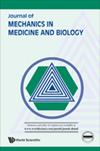基于多源数据融合的域自适应TSK模糊系统在癫痫脑电信号分类中的应用
IF 0.6
4区 医学
Q4 BIOPHYSICS
引用次数: 0
摘要
近年来,基于癫痫信号的机器学习方法在脑机接口(bci)上取得了良好的效果。随着其应用范围的不断扩大,对标记癫痫信号的需求也在不断增加。对于大量数据驱动的模型,这样的信号是不合适的,因为它们延长了校准周期。为此,提出了一种基于多源数据融合的域自适应模糊系统模型(DA-TSK)。DA-TSK的目的是在标记数据量不足的情况下保持较高的分类性能。DA-TSK模型不仅具有较强的学习能力,可以从脑电图数据中学习特征信息,而且具有可解释性,这有助于医学上理解模型的分析过程。特别地,该模型可以通过域自适应,充分利用源域和目标域的少量标记脑电数据。因此,DA-TSK模型可以在一定程度上降低数据依赖性,提高目标分类器的泛化性能。通过实验验证了基于癫痫信号的DA-TSK模型在公开EEG数据集上的有效性。当目标域的标记数据不足时,DA-TSK模型可以获得满意的精度。本文章由计算机程序翻译,如有差异,请以英文原文为准。
Domain-adaptive TSK fuzzy system based on multisource data fusion for epileptic EEG signal classification
In recent years, machine learning methods based on epileptic signals have shown good results with brain-computer interfaces (BCIs). With the continuous expansion of their applications, the demand for labeled epileptic signals is increasing. For a large number of data-driven models, such signals are not suitable, as they extend the calibration cycle. Therefore, a new domain-adaptive TSK fuzzy system model based on multisource data fusion (DA-TSK) is proposed. The purpose of DA-TSK is to maintain high classification performance when the amount of labeled data is insufficient. The DA-TSK model not only has a strong learning ability to learn characteristic information from EEG data but is also interpretable, which aids in the understanding of the analytic process of the model for medical purposes. In particular, this model can make full use of a small amount of labeled EEG data in the source domain and target domain through domain adaptation. Therefore, the DA-TSK model can reduce data dependence to a certain extent and improve the generalization performance of the target classifier. Experiments are performed to evaluate the effectiveness of the DA-TSK model on public EEG datasets based on epileptic signals. The DA-TSK model can obtain satisfactory accuracy when the labeled data are insufficient in the target domain.
求助全文
通过发布文献求助,成功后即可免费获取论文全文。
去求助
来源期刊

Journal of Mechanics in Medicine and Biology
工程技术-工程:生物医学
CiteScore
1.20
自引率
12.50%
发文量
144
审稿时长
2.3 months
期刊介绍:
This journal has as its objective the publication and dissemination of original research (even for "revolutionary concepts that contrast with existing theories" & "hypothesis") in all fields of engineering-mechanics that includes mechanisms, processes, bio-sensors and bio-devices in medicine, biology and healthcare. The journal publishes original papers in English which contribute to an understanding of biomedical engineering and science at a nano- to macro-scale or an improvement of the methods and techniques of medical, biological and clinical treatment by the application of advanced high technology.
Journal''s Research Scopes/Topics Covered (but not limited to):
Artificial Organs, Biomechanics of Organs.
Biofluid Mechanics, Biorheology, Blood Flow Measurement Techniques, Microcirculation, Hemodynamics.
Bioheat Transfer and Mass Transport, Nano Heat Transfer.
Biomaterials.
Biomechanics & Modeling of Cell and Molecular.
Biomedical Instrumentation and BioSensors that implicate ''human mechanics'' in details.
Biomedical Signal Processing Techniques that implicate ''human mechanics'' in details.
Bio-Microelectromechanical Systems, Microfluidics.
Bio-Nanotechnology and Clinical Application.
Bird and Insect Aerodynamics.
Cardiovascular/Cardiac mechanics.
Cardiovascular Systems Physiology/Engineering.
Cellular and Tissue Mechanics/Engineering.
Computational Biomechanics/Physiological Modelling, Systems Physiology.
Clinical Biomechanics.
Hearing Mechanics.
Human Movement and Animal Locomotion.
Implant Design and Mechanics.
Mathematical modeling.
Mechanobiology of Diseases.
Mechanics of Medical Robotics.
Muscle/Neuromuscular/Musculoskeletal Mechanics and Engineering.
Neural- & Neuro-Behavioral Engineering.
Orthopedic Biomechanics.
Reproductive and Urogynecological Mechanics.
Respiratory System Engineering...
 求助内容:
求助内容: 应助结果提醒方式:
应助结果提醒方式:


